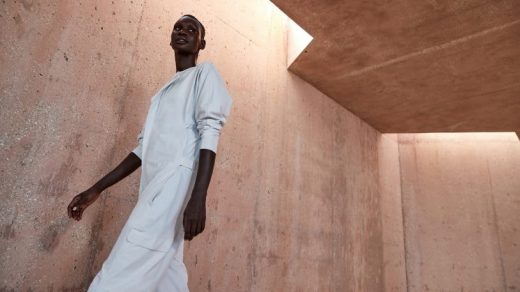Lululemon’s first fashion brand, ten years in the making, is here
For the last decade, Lululemon has been quietly tinkering with a luxury streetwear label called Lab. The $3.8 billion sportswear giant first piloted the concept in 2009, opening a store in Vancouver. Then, over the last three years, it opened two more Lab stores in New York. Until now, these were the only places to catch a peek at the project and buy a few limited-edition pieces. But today, Lab hits prime time: The newest 44-piece collection will be available online and at 45 stores across North America, Europe, and Asia.
“Lab allows us to flex a slightly different muscle than we get to do in the main Lululemon line,” says Ben Stubbington, senior VP of men’s design, who led the design of Lab. “It gives us room to play with design, instigate ideas, and try new things.”
Lab will exist as a separate brand from Lululemon, one that is both more expensive—items range from $80 to more than $500, prices that run approximately 30% higher than existing Lululemon products—and more exclusive, given that it will only be available at about 10% of Lululemon stores. “We are intentionally limiting the distribution of this collection because we know that our high-value, loyal guests have been looking for something that is more limited-edition,” says Sun Choe, Lululemon’s head of product. “As we grow internationally, we know that exclusivity is something that is very important in Asia and Europe.”
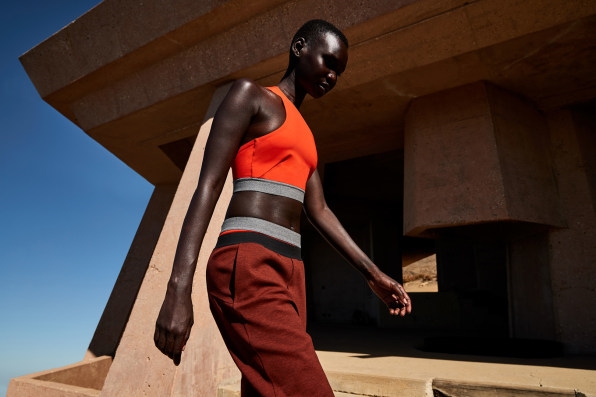
[Photo: Lab]
In many ways, Lab is a natural extension of Lululemon’s existing design ethos. The brand rose to fame in the 2000s thanks to its soft but stretchy yoga pants, and soon expanded into other sports, like running and training. But then something happened: Lululemon customers began wearing their garments outside of sports and into their daily life. This helped to propel the phenomenon of “athleisure,” which refers to athletic clothes that can be worn outside of sport, into the fashion world. Today many other startups, from Aday to Ministry of Supply have created entire brands using activewear fabrics in workwear and streetwear lines.
Lululemon helped pioneer athleisure, which has been the most dominant and disruptive trend in the fashion industry over the last five years. But with Lab, the brand wants to stake a claim beyond the activewear industry and in the world of fashion. Lab is a high-end streetwear brand in the same vein as Virgil Abloh’s Off-White, Rihanna’s Fenty Maison, or Supreme. “The athleisure market was about the adaption of technology, comfort, and functionality into everyday clothing,” Stubbington says. “But this came through more of a sports filter. Lab goes to the next extreme, by taking it into the realm of fashion and design.”
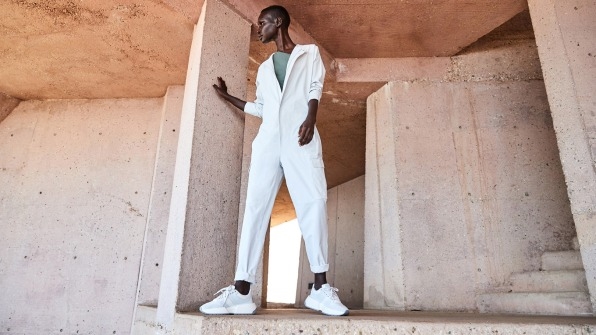
[Photo: Lab]
Lab’s new collection has a distinct design perspective: Everything is pared down to its essence, conveying industrial-tinged minimalism. One example is a $218 white monochrome women’s jumpsuit with a baggy silhouette, cargo pockets, and buckles—it looks like it could be worn by a modern-day Rosie the Riveter. Then there’s a $148 black collar-less men’s shirt that lacks any other seams or details. “We’re focused on what is essential about the garment, stripping back and simplifying,” Stubbington says. It’s streetwear in the true sense of the word, designed for urban dwellers who are constantly on the move on crowded city streets, from their daily commute to trips overseas. “They’re designed for people who have a kind of nomadic office,” says Stubbington.
The collection has a men’s line, a women’s line, and some unisex pieces, but the boxy and loose-fitting garments are not strongly gendered. This sets them apart from Lululemon-branded garments, which tend to be body-hugging, in part because of the need for compression in activewear. “We’ve taken away much of the curve seaming that accentuates the female form,” says Choe. “We’ve taken out some of that in the interests of minimalism, which makes the clothes feel a little less feminine.”
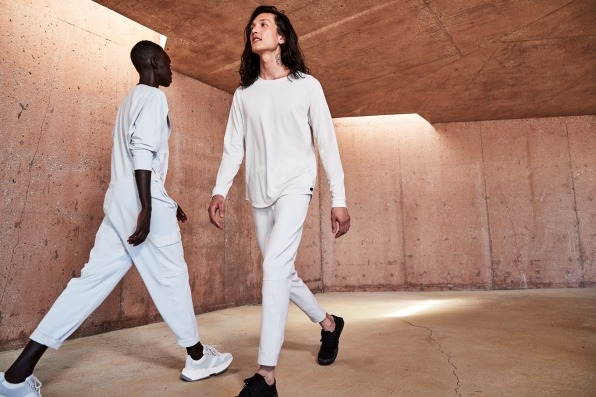
[Photo: Lab]
The clothes still share some of Lululemon’s focus on technical features, though, like fast-drying and moisture-wicking fabrics. They’re also made in much the same way, with techniques like bonding and laser cutting. “We’re taking a lot of the learnings that we’ve acquired through the sports-related products and bringing them into the clothes you’re wearing in everyday life,” he says. “We’re always moving and we’re always sweating, even when we’re jumping on a plane and running around a new city. It’s not that different from sport.”
Lululemon has been growing quickly over the last few years, largely by scaling its core sportswear brand through a network of 460 stores in every corner of the globe, including Australia, the United Arab Emirates, and China. By presenting itself as a full-on fashion brand, Lululemon has an opportunity to reach a new kind of customer—one primarily interested in style and design, rather than sport. “We’re trying to create a kind of pinnacle minimalism,” Stubbington says. “It’s a reductive ethos to the extreme.”
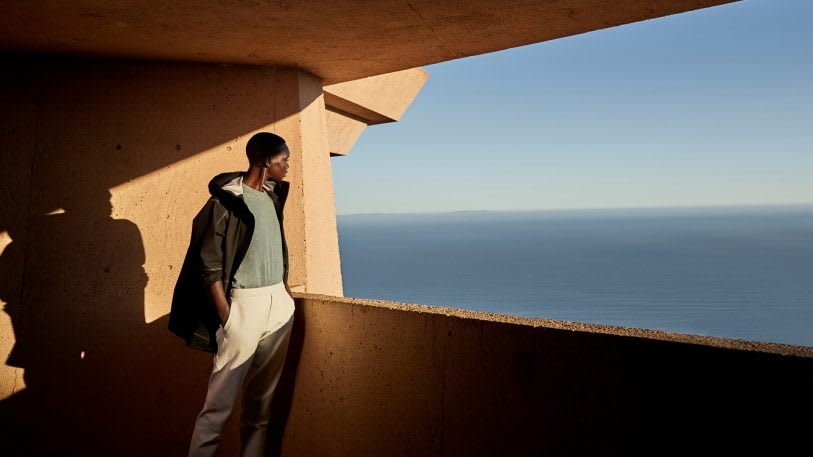
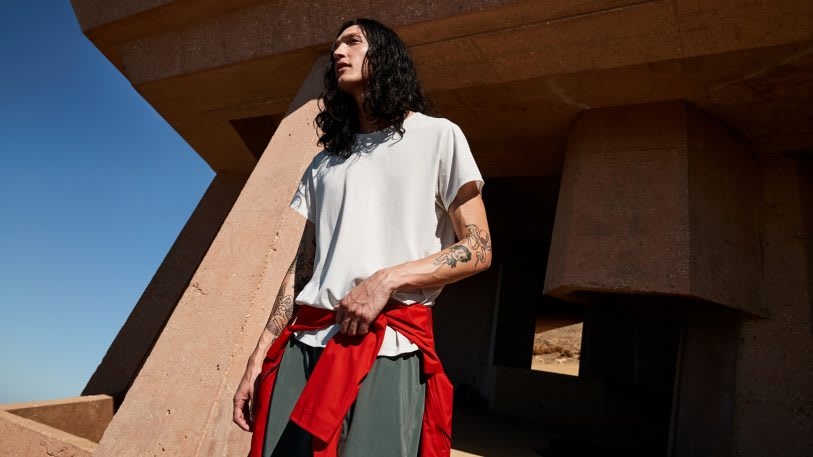
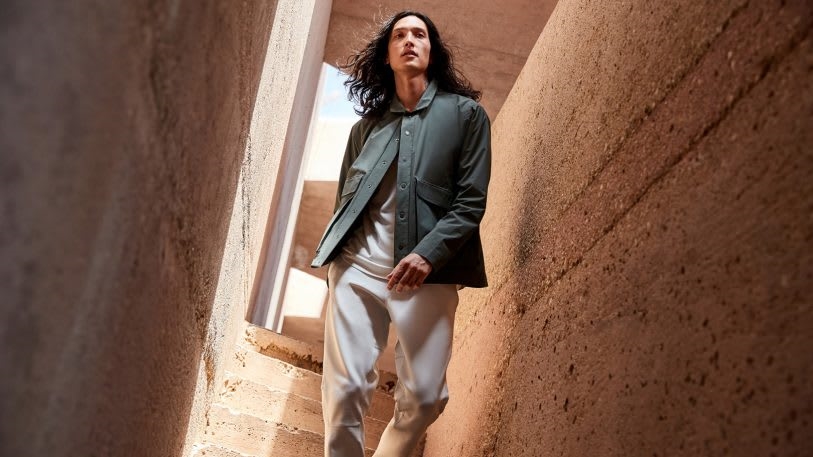
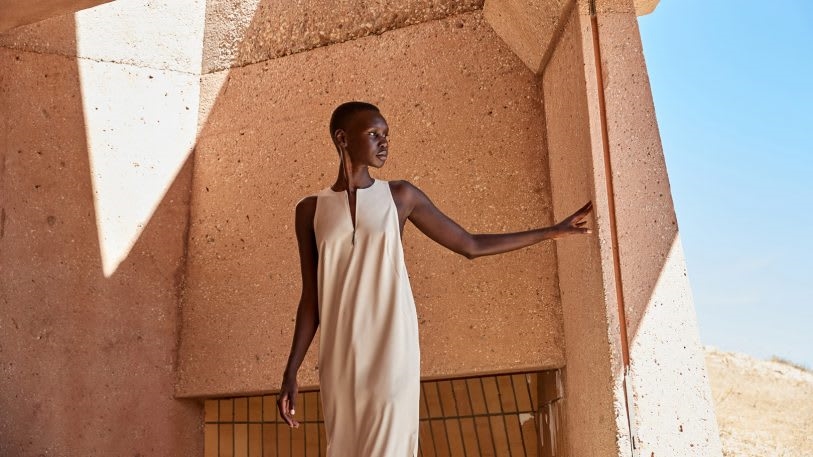
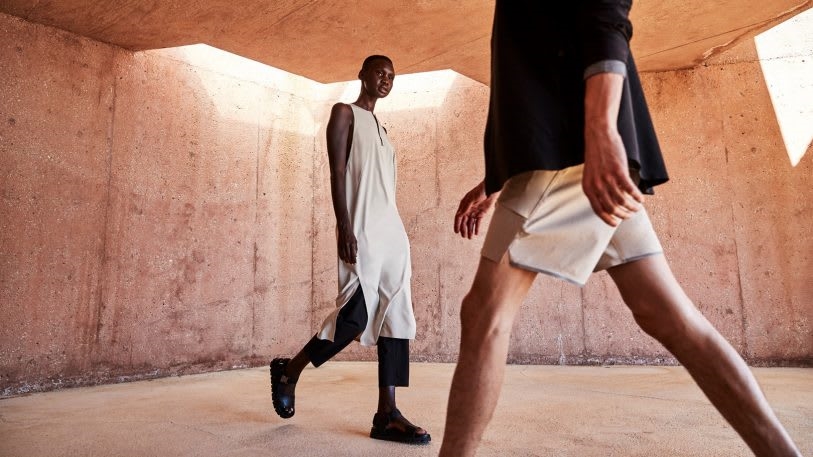
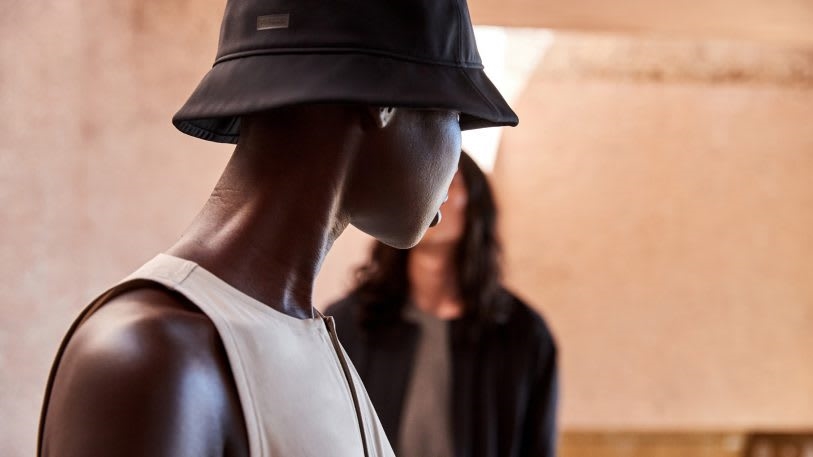
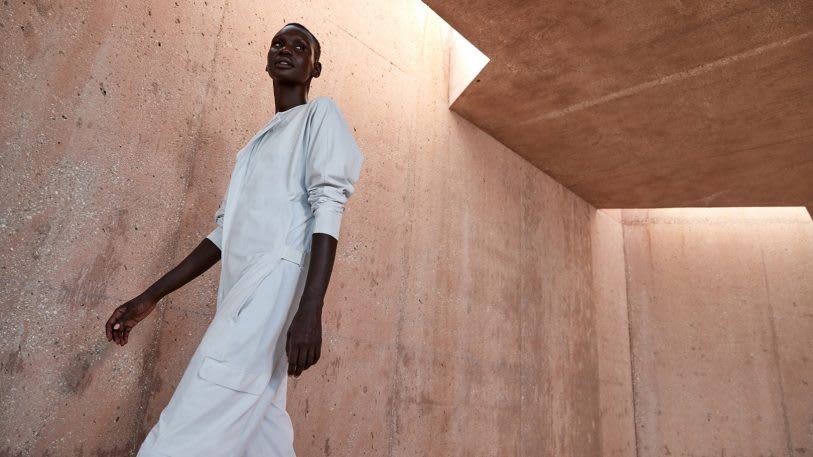
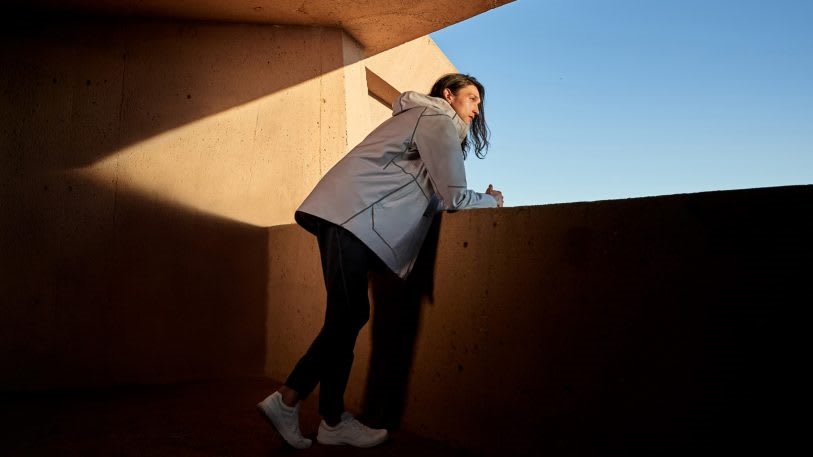
Fast Company , Read Full Story
(8)

